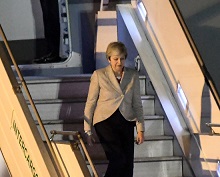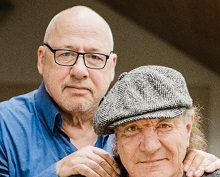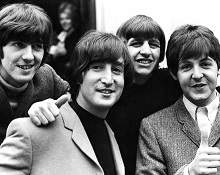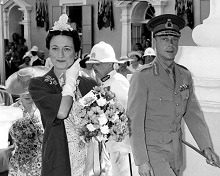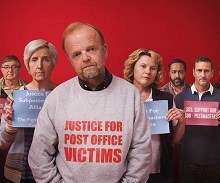Crime noir tips from team behind ITV’s Marcella
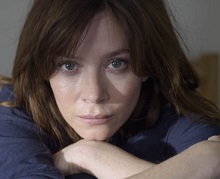 Creator of The Bridge and Marcella, Hans Rosenfeldt, delivered an insightful and surprisingly playful crime noir masterclass at this year’s Edinburgh International Television Festival.
Creator of The Bridge and Marcella, Hans Rosenfeldt, delivered an insightful and surprisingly playful crime noir masterclass at this year’s Edinburgh International Television Festival.
Chaired by TV and radio presenter Martha Kearney and with Marcella’s lead actor Anna Friel on the panel alongside the show’s executive producer Tony Wood of Buccaneer Media, the writing process, realism, and characterisation of crime noir dramas were all discussed in front of a packed audience in Edinburgh.
Marcella – a complex character with a difference
ITV and Netflix series Marcella started out as a germ of an idea from co-creator Nicola Larder who approached screenwriter Hans Rosenfeldt with a five-episode pitch. The show was a success and gathered an average of around 7 million viewers throughout the series.
“We had dinner and [Larder] said she had this idea about a cop show in London,” said Rosenfeldt. “It was really about the character of Marcella rather than the plot at the pitch stage.”
Marcella suffers from dissociative fugue, also known as fugue state – the sufferer loses all memory of events for a time but continues to function, this means that it is hard to tell if someone has the condition. In the series it played a large part in the whodunit element, as Marcella loses all recollection of what actually happened.
Rosenfeldt: “We wanted her to be different, not just to investigate a murder case, but also investigate herself. Has she done anything? Is she guilty? This is a real medical condition – although I love making things up, this is real.”
Friel described the character she plays as “vulnerable, complex, interesting, a mix of strength and vulnerability” and said she was “fascinated by the fugue state and intrigued by her unpredictability”.
“I made myself very dizzy [to portray the fugue state]. I would spin round and round to get the feeling of disorientation. The amazing music and cinematography helped. And the absence of sound is quite eerie.”
The Bridge
It is not the first time Rosenfeldt penned down a complex character as the centre piece of a crime drama. In The Bridge the lead female character, Saga, appealed to her creator partly due to her flaws and total lack of social skills.
“Sofia [Helin, who played Saga] wasn’t really that well-received, especially in Sweden where they thought she was a little wooden, not a good actress. But she was supposed to be emotionless, slightly robotic in her voice,” Rosenfeldt explains. “But people started to get intrigued, thinking ‘OK, maybe we missed something’.
“I like flaws. I wanted to create a woman with no social skills. Happy people are boring to work with, and also in real life actually.”
“There is always some scepticism about the realism. People don’t think, for example, that Saga would have made it through police academy. Or that a mobile phone would have been left in a body bag. But coolness beats reality. It’s drama after all.”
Lack of sound setting the tone
As Friel said, in Marcella there is a complete absence of sound during the fugue state scenes to emphasise the lack of connection with real events. It’s a brave move, but one that worked for the team.
Sound was an intrinsic part of the drama. “For the first three episodes we went through every word of the text so it was naturalistic, but from there onwards we would occasionally juxtapose the edit,” said the show’s producer Tony Wood. “Then it was all about the soundscape.
“We could chop and change between the onus being on the picture or the sound”, said Wood. “We wanted the audience to lean in and really understand it, analyse it, work it out.”
And lean in they did, as can be seen from the impressive viewing figures. It therefore might not have come as a complete surprise to some when it was confirmed last week that a second series for Marcella is in the pipeline.
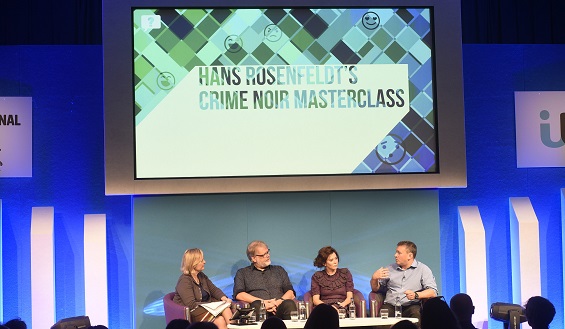
The writing process
What did come to a surprise for many was the show's ending. Most of the cast members were in the dark as to the identity of the murderer, including Friel. Said Rosenfeldt: “We knew who’d done it and why but most of the cast didn’t. Other writers worked on the first few episodes, then I came back in for the last few.
“I like taking the baby back once they’ve nursed it for a while. I’m a control freak, I can’t really let people work on something all the way to the end.”
Friel acknowledged that not knowing whether her character could have committed the crime helped in her portrayal: “I was asked if I wanted to know, but I used not knowing to my advantage. Because, of course, Marcella didn’t know – imagine living with that…”
Filming locations
But while the actors did not know the killer, Rosenfeldt didn’t know the locations. In Edinburgh the writer laughingly admitted that he didn’t know London very well, and that he had more of a “tourist’s view” of the city when he started writing the series set in the capital.
Production personnel had to set him straight on some of his ideas and a lot of teamwork was involved in finding the best locations which could achieve the sepulchral, dark backdrops.
“I Google-mapped place names I liked the look of and placed my characters there, but then someone would say “No Hans, I don’t think they would live somewhere like that!”
“It’s all tricks”
And to all aspiring crime noir writers out there, Rosenfeldt had this advice: “Don’t wait for inspiration, just write every single day. If it’s rubbish, change it, but there will always be something good in it.
“Watch a lot of television, try to work out why good TV scenes are so good, what did they do?
“Because of course, it’s all tricks...”
Panel photo via Edinburgh International Telvision festival credit Greg MacVean.
Also on The Knowledge
ITV to document Theresa May’s premiership
ITV has greenlit a documentary exploring Theresa May’s time as Prime Minister.
Sky Arts orders rock legends doc
Sky Arts has ordered a six-part documentary series presented by rock legends Mark Knopfler (Dire Straits) and Brian Johnson (AC/DC).
UKTV orders midwife docu-reality series
UKTV has commissioned The Real Midwives of Essex (8x60’) from Firecracker Films for W, exploring the professional and social lives of Basildon University Hospital’s midwives.
Sam Mendes to direct four Beatles biopics
Director Sam Mendes is behind a major new project to produce four biopics, one about each of the Beatles.
C5 greenlights doc on Edward and Mrs Simpson’s Bahamas years
Channel 5 has greenlit a new documentary from Yeti about the years that Edward and Wallis Simpson spent in the Bahamas during the Second World War, following his abdication as King in 1936.
Mr Bates vs Post Office hits whopping 13.5m
ITV’s drama about the Post Office IT scandal has averaged a total of 13.5m viewers across its four-episodes after 28 days.


